Saturns Swirling Cloudscape
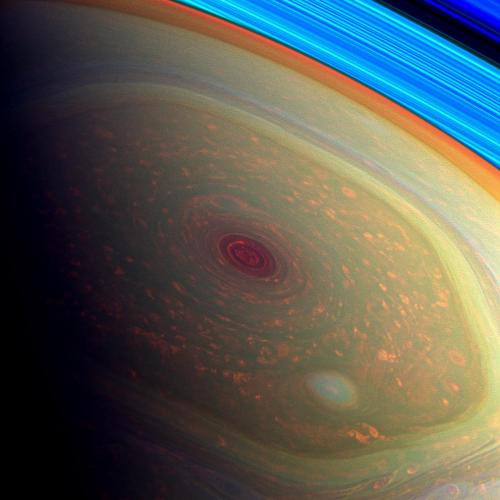
Saturns Swirling Cloudscape
js
More Posts from Night-hides-the-world and Others
Source: TheGeekerie









Modern geometric illustrations of Planets of the Solar System. These infographic illustrations feature a history of scientific exploration. Probes, satellites, space stations, etc., highlighting the achievements of man in astronomic discovery. Each illustration also features the distance from the Sun, rotational period in days/years and the number of confirmed, natural satellites.
Source is Discovery Chanel. Here’s a video.

The largest known star in the universe, compared to Earth.
In order of appearance - Earth, Sol (Our Sun), Sirius, Betelgeuse, Canis Majoris.
Canis Majoris is in fact so large, that if it were to replace our own sun the star itself would extend outwards past the orbit of Jupiter.
[Click for more interesting science facts and gifs]
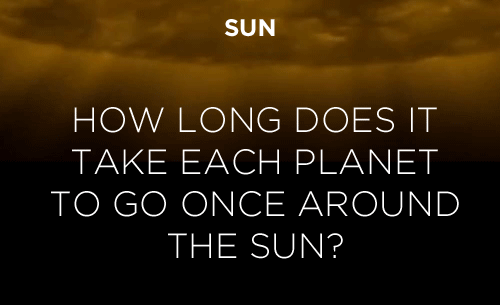

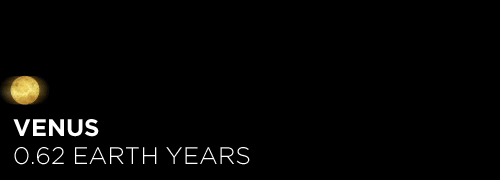

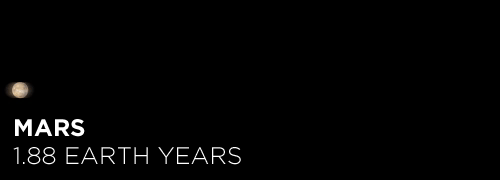




Here’s the orbital period of our solar system’s 8 major planets (how long it takes each to travel around the sun). Their size is to scale and their speed is accurate relative to Earth’s. The repetition of each GIF is proportional to their orbital period. Mercury takes less than 3 months to zoom around Sol, Neptune takes nearly 165 years.
New Science from our Mission to Touch the Sun

In August 2018, our Parker Solar Probe mission launched to space, soon becoming the closest-ever spacecraft from the Sun. Now, scientists have announced their first discoveries from this exploration of our star!
The Sun may look calm to us here on Earth, but it’s an active star, unleashing powerful bursts of light, deluges of particles moving near the speed of light and billion-ton clouds of magnetized material. All of this activity can affect our technology here on Earth and in space.
Parker Solar Probe’s main science goals are to understand the physics that drive this activity — and its up-close look has given us a brand-new perspective. Here are a few highlights from what we’ve learned so far.
1. Surprising events in the solar wind
The Sun releases a continual outflow of magnetized material called the solar wind, which shapes space weather near Earth. Observed near Earth, the solar wind is a relatively uniform flow of plasma, with occasional turbulent tumbles. Closer to the solar wind’s source, Parker Solar Probe saw a much different picture: a complicated, active system.
One type of event in particular drew the eye of the science teams: flips in the direction of the magnetic field, which flows out from the Sun, embedded in the solar wind. These reversals — dubbed “switchbacks” — last anywhere from a few seconds to several minutes as they flow over Parker Solar Probe. During a switchback, the magnetic field whips back on itself until it is pointed almost directly back at the Sun.

The exact source of the switchbacks isn’t yet understood, but Parker Solar Probe’s measurements have allowed scientists to narrow down the possibilities — and observations from the mission’s 21 remaining solar flybys should help scientists better understand these events.
2. Seeing tiny particle events
The Sun can accelerate tiny electrons and ions into storms of energetic particles that rocket through the solar system at nearly the speed of light. These particles carry a lot of energy, so they can damage spacecraft electronics and even endanger astronauts, especially those in deep space, outside the protection of Earth’s magnetic field — and the short warning time for such particles makes them difficult to avoid.

Energetic particles from the Sun impact a detector on ESA & NASA’s SOHO satellite.
Parker Solar Probe’s energetic particle instruments have measured several never-before-seen events so small that all trace of them is lost before they reach Earth. These instruments have also measured a rare type of particle burst with a particularly high number of heavier elements — suggesting that both types of events may be more common than scientists previously thought.
3. Rotation of the solar wind
Near Earth, we see the solar wind flowing almost straight out from the Sun in all directions. But the Sun rotates as it releases the solar wind, and before it breaks free, the wind spins along in sync with the Sun’s surface. For the first time, Parker was able to observe the solar wind while it was still rotating – starting more than 20 million miles from the Sun.

The strength of the circulation was stronger than many scientists had predicted, but it also transitioned more quickly than predicted to an outward flow, which helps mask the effects of that fast rotation from the vantage point where we usually see them from, near Earth, about 93 million miles away. Understanding this transition point in the solar wind is key to helping us understand how the Sun sheds energy, with implications for the lifecycles of stars and the formation of protoplanetary disks.
4. Hints of a dust-free zone
Parker also saw the first direct evidence of dust starting to thin out near the Sun – an effect that has been theorized for nearly a century, but has been impossible to measure until now. Space is awash in dust, the cosmic crumbs of collisions that formed planets, asteroids, comets and other celestial bodies billions of years ago. Scientists have long suspected that, close to the Sun, this dust would be heated to high temperatures by powerful sunlight, turning it into a gas and creating a dust-free region around the Sun.

For the first time, Parker’s imagers saw the cosmic dust begin to thin out a little over 7 million miles from the Sun. This decrease in dust continues steadily to the current limits of Parker Solar Probe’s instruments, measurements at a little over 4 million miles from the Sun. At that rate of thinning, scientists expect to see a truly dust-free zone starting a little more than 2-3 million miles from the Sun — meaning the spacecraft could observe the dust-free zone as early as 2020, when its sixth flyby of the Sun will carry it closer to our star than ever before.
These are just a few of Parker Solar Probe’s first discoveries, and there’s plenty more science to come throughout the mission! For the latest on our Sun, follow @NASASun on Twitter and NASA Sun Science on Facebook.
COMPARISON PHOTOS: hubble vs james webb
SMACS 0723
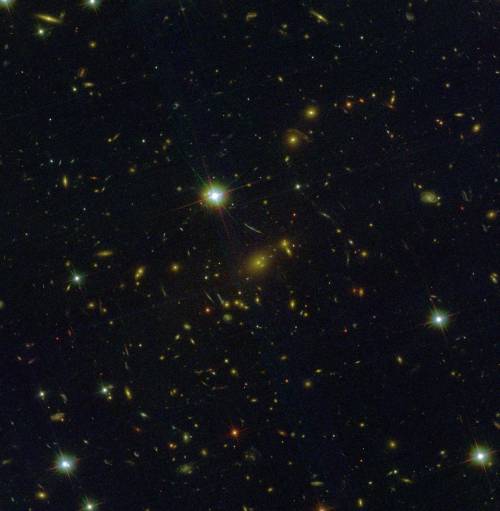
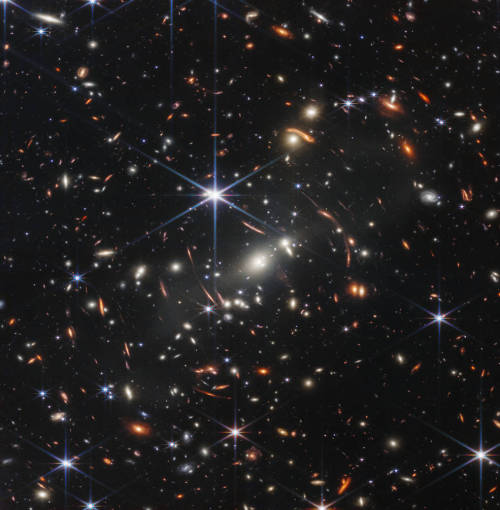
southern ring nebula

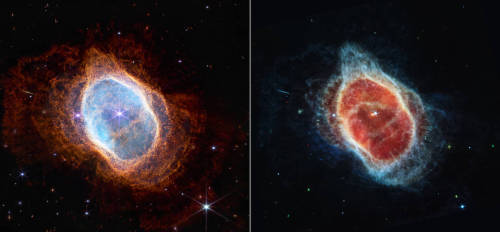
carina nebula (NGC 3324)
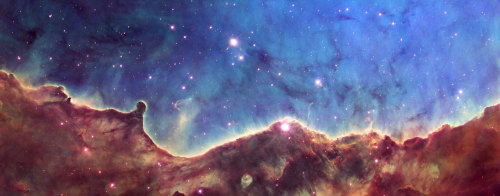
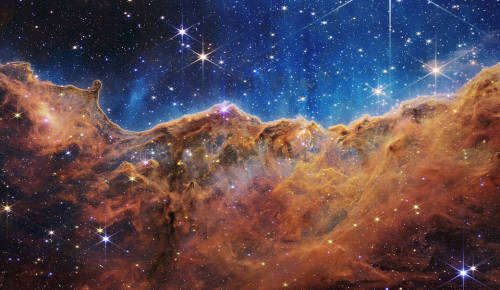
stephan's quintet



What do you get when you combine a doctor, engineer & astronaut? Mae Carol Jemison! Dr. Jemison flew on Space Shuttle Endeavour in Sept 1992 to become the 1st African-American woman in space. The 7-day, 22-hour flight was the 50th Shuttle mission & had a focus on conducting microgravity investigations in materials & life sciences. Dr. Jemison also holds an amazing 9 doctorates; don’t know how that’s humanly possible; getting my BA was tough enough!

The Lonely Galaxy
Most galaxies are part of a group or cluster where a neighboring galaxy is never far away. Galaxy NGC 6503 however, is an exception. This galaxy has found itself in a lonely position, at the edge of a strangely empty patch of space called the Local Void. The Local Void is a huge stretch of space that is at least 150 million light-years across.
Credit: NASA, ESA, Hubble Heritage (STScI/AURA)-ESA
-
 julierthanyou liked this · 3 years ago
julierthanyou liked this · 3 years ago -
 reelaroundthedavekan reblogged this · 3 years ago
reelaroundthedavekan reblogged this · 3 years ago -
 meditationrelaxationmusic reblogged this · 4 years ago
meditationrelaxationmusic reblogged this · 4 years ago -
 anti-pococurantism liked this · 5 years ago
anti-pococurantism liked this · 5 years ago -
 bodhishadow liked this · 5 years ago
bodhishadow liked this · 5 years ago -
 fagdykefrank liked this · 5 years ago
fagdykefrank liked this · 5 years ago -
 keenwagonhumanbakery liked this · 5 years ago
keenwagonhumanbakery liked this · 5 years ago -
 therealsirsticker liked this · 5 years ago
therealsirsticker liked this · 5 years ago -
 emorgan5061 liked this · 5 years ago
emorgan5061 liked this · 5 years ago -
 notisaidthechicken liked this · 5 years ago
notisaidthechicken liked this · 5 years ago -
 iithegreatmip liked this · 5 years ago
iithegreatmip liked this · 5 years ago -
 4homburg2mollie0 liked this · 5 years ago
4homburg2mollie0 liked this · 5 years ago -
 thesultanofgrooming liked this · 5 years ago
thesultanofgrooming liked this · 5 years ago -
 the-lady-razorsharp liked this · 5 years ago
the-lady-razorsharp liked this · 5 years ago -
 center-for-chthonic-studies reblogged this · 5 years ago
center-for-chthonic-studies reblogged this · 5 years ago -
 ausevor liked this · 5 years ago
ausevor liked this · 5 years ago -
 pulchritudinous020-blog liked this · 5 years ago
pulchritudinous020-blog liked this · 5 years ago -
 pet666ter liked this · 5 years ago
pet666ter liked this · 5 years ago -
 jacquelinesantiago liked this · 5 years ago
jacquelinesantiago liked this · 5 years ago -
 tglucose reblogged this · 6 years ago
tglucose reblogged this · 6 years ago -
 bigoufmemes liked this · 6 years ago
bigoufmemes liked this · 6 years ago -
 daemondamian liked this · 6 years ago
daemondamian liked this · 6 years ago -
 verminviscount liked this · 6 years ago
verminviscount liked this · 6 years ago -
 decadentsuittimemachine reblogged this · 6 years ago
decadentsuittimemachine reblogged this · 6 years ago -
 isolationaroundus reblogged this · 6 years ago
isolationaroundus reblogged this · 6 years ago -
 isolationaroundus liked this · 6 years ago
isolationaroundus liked this · 6 years ago -
 soulful-alignment reblogged this · 6 years ago
soulful-alignment reblogged this · 6 years ago -
 xenthecreative liked this · 6 years ago
xenthecreative liked this · 6 years ago -
 cxnstellati0ns reblogged this · 6 years ago
cxnstellati0ns reblogged this · 6 years ago -
 krqk reblogged this · 6 years ago
krqk reblogged this · 6 years ago -
 ajc18615425 liked this · 6 years ago
ajc18615425 liked this · 6 years ago -
 redoctopusbabe reblogged this · 6 years ago
redoctopusbabe reblogged this · 6 years ago -
 redoctopusbabe liked this · 6 years ago
redoctopusbabe liked this · 6 years ago -
 bouquetlovelove liked this · 6 years ago
bouquetlovelove liked this · 6 years ago -
 nitafromtheshadows liked this · 6 years ago
nitafromtheshadows liked this · 6 years ago -
 spaceysthings reblogged this · 6 years ago
spaceysthings reblogged this · 6 years ago -
 mo0ments-mending-mem0ories reblogged this · 6 years ago
mo0ments-mending-mem0ories reblogged this · 6 years ago -
 mo0ments-mending-mem0ories liked this · 6 years ago
mo0ments-mending-mem0ories liked this · 6 years ago -
 mavro-tsai liked this · 6 years ago
mavro-tsai liked this · 6 years ago
Astronomy and the other wonders you witness when you look to the skies.
115 posts

